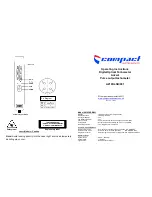
Installation and commissioning
multi N/C 2100S (duo, pharma)
48
4.3.4
Integrated solids module
An integrated solids module, the Double Furnace module, can be added to the combus-
tion system of the analyzer. Small amounts of solid samples can be examined with the
solids module, e.g., during cleaning validation.
The module achieves digestion temperatures of up to 950 °C. Sample digestion is per-
formed by catalysts.
Technical data
Digestion temperature
Up to 950 °C
Catalyst
CeO
2
(special catalyst)
Sample volume
0 to 500 mg
Sample feed
Manual, in boats via the lock
Carrier gas supply
Oxygen (≥4.5), inlet pressure 400 to 600
kPa
Layout
The integrated solids module consists of the following main components:
¡
Sample supply system
¡
Combustion system
¡
Accessories
The module is connected to the combustion furnace of the analyzer with an adapter.
The combustion tube for solids is inserted into the furnace for this.
Figure 25Layout of the integrated solids module
1 Sample feed
2 Furnace lock with interlock
3 Combustion tube, filled with catalyst
4 Gas outlet (for measuring gas)
Sample supply
The solids module has a furnace lock with interlock. The furnace lock is mounted on the
side opening of the combustion tube. The solid samples are weighed into boats and
pushed into the combustion tube with the aid of the manual sample feed. The furnace
lock can be opened and closed manually via the interlock.
Combustion system
The integrated solids module can only be used together with a combustion furnace for
vertical and horizontal operation. The combined combustion furnace has two openings.
The furnace can be operated with both a vertically installed combustion tube and the
horizontally installed combustion tube.
The combustion tube for solids consists of quartz glass. The furnace lock with manual
feed is mounted on the side opening of the combustion tube. The gas hose is connected
to the gas outlet. The gas hose is connected to the condensation coil in the analyzer
with a fork clamp.
The double-walled combustion tube is filled with catalyst and auxiliary material. As a
catalyst, the special catalyst for multi N/C (CeO
2
) is used with a reaction temperature of
up to 950 °C. The standard temperature setting is 900 °C.
















































